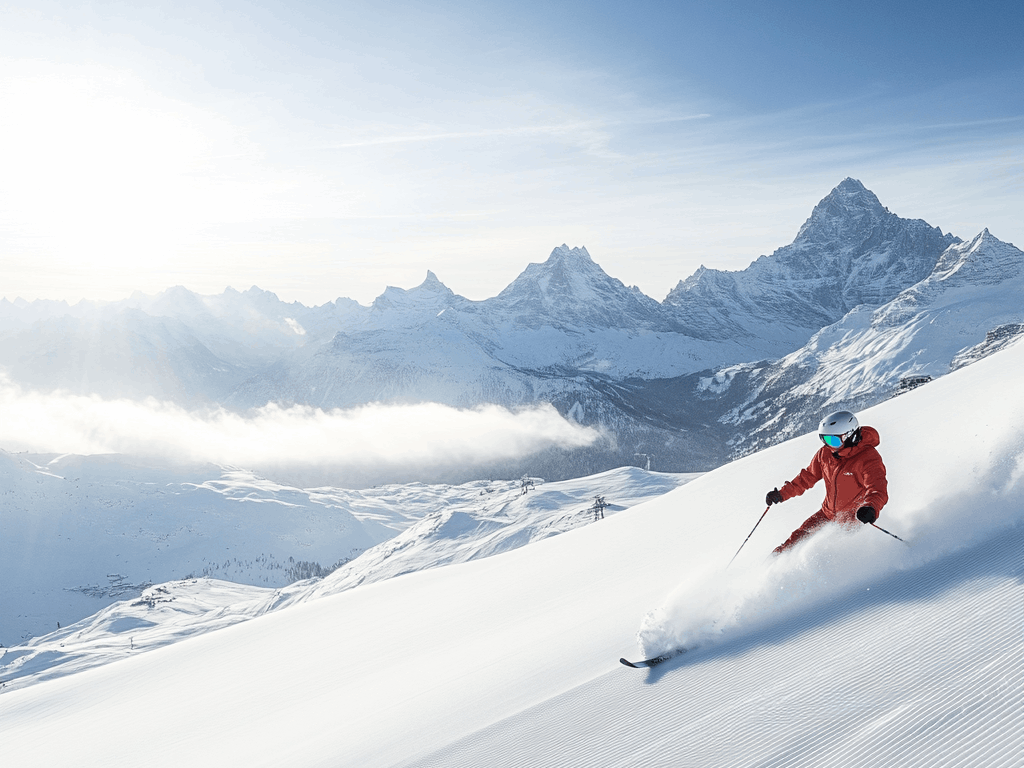Why Snow Reports Matter
Switzerland’s Alps get reliable snow from December to April, but conditions vary daily. A fresh dump can mean perfect powder, while a warm spell might leave you skiing on slush. Snow reports tell you snow depth, recent snowfall, and slope conditions, so you can pick days when the pistes are at their prime. They also hint at crowd levels—key for dodging lift lines in popular spots like Davos or St. Moritz.
Understanding Snow Reports
Snow reports are packed with info, but they can feel like a foreign language. Here’s what to look for:
Snow Depth: Measured in centimeters at base and summit. For example, Davos might report 50 cm at base and 150 cm at 2,500 meters. Thicker is better, especially at lower altitudes.
Recent Snowfall: Look for reports of 20+ cm in the last 24 hours for fresh powder. Less than 5 cm might mean hard-packed or icy slopes.
Slope Status: Reports list open runs (e.g., “30/50 pistes open”). More open runs mean more options.
Weather Forecast: Sunny days are great for visibility, but fresh snow often comes with clouds. Check for “partly cloudy” for a balance of snow and views.
Avalanche Risk: Rated 1–5 (low to high). Stick to marked pistes if the risk is 3 or higher.
Where to Find Reports
Most resorts post daily snow reports on their websites or apps. The SLF Avalanche Bulletin is a must for off-piste skiers, with detailed regional forecasts. Apps like Snow-Forecast.com offer real-time updates for resorts like St. Moritz, Zermatt, and Verbier. Check reports the night before and again at breakfast—conditions can change fast.
Picking the Best Ski Days
Timing Matters: Mid-week (Tuesday–Thursday) often has fresher snow and fewer crowds than weekends. January and March are less busy than February’s peak season.
Fresh Snow Days: Ski right after a snowfall (10–30 cm) for powder. For example, Davos’s Parsenn area is a powder haven after a storm. Wait a day if the snow’s too heavy for grooming.
Altitude Advantage: High-altitude resorts like Saas-Fee (glacier skiing at 3,600 meters) or Zermatt have better snow in early or late season. Lower resorts like Gstaad can get slushy in March.
Weather Sweet Spot: Aim for partly cloudy days with temps between -5°C and 0°C. Too warm, and slopes turn to mush; too cold, and you’re fighting frostbite.
Resort-Specific Tips
Davos: The Parsenn area’s high slopes (2,844 meters) hold snow well. Check reports for Jakobshorn if you’re snowboarding—it’s a freestyle hotspot.
St. Moritz: Known for sunny days, but lower runs (1,800 meters) can get icy. Focus on Corviglia or Corvatsch for reliable snow.
Verbier: Off-piste heaven, but check avalanche reports religiously. Mont Fort needs fresh snow to shine.
Grindelwald: First and Kleine Scheidegg are great post-storm, but avoid warm afternoons when lower slopes soften.
Crowd Avoidance
Snow reports don’t list crowd levels, but you can hack it. If a report shows fresh snow after a dry spell, expect crowds—everyone wants powder. Ski early (lifts open 8:30–9 AM) to beat the rush. Smaller villages like Saas-Fee or Andermatt are less packed than Zermatt or Davos.
Après-Ski Planning
Great snow days deserve great après-ski. In St. Moritz, hit a slope-side café for hot chocolate with a view of Lake Silvaplana. Davos’s Parsenn huts serve hearty soups perfect for warming up. Check snow reports for lift closure times (usually 4–5 PM) to plan your last run.
Practical Tips
Check Daily: Snow reports update by 7 AM. Use resort apps for real-time alerts.
Gear Prep: Fresh snow means wax your skis for glide; icy conditions need sharper edges.
Travel: Book flights to Zurich or Geneva via our widget for easy access to resorts (2–3-hour trains).
Backup Plans: If conditions suck, try indoor activities like spa visits or village markets.
Mastering snow reports is your ticket to epic ski days in Switzerland. With a little know-how, you’ll be carving powder under sunny skies while others are stuck in slush. Get planning and hit the slopes!
